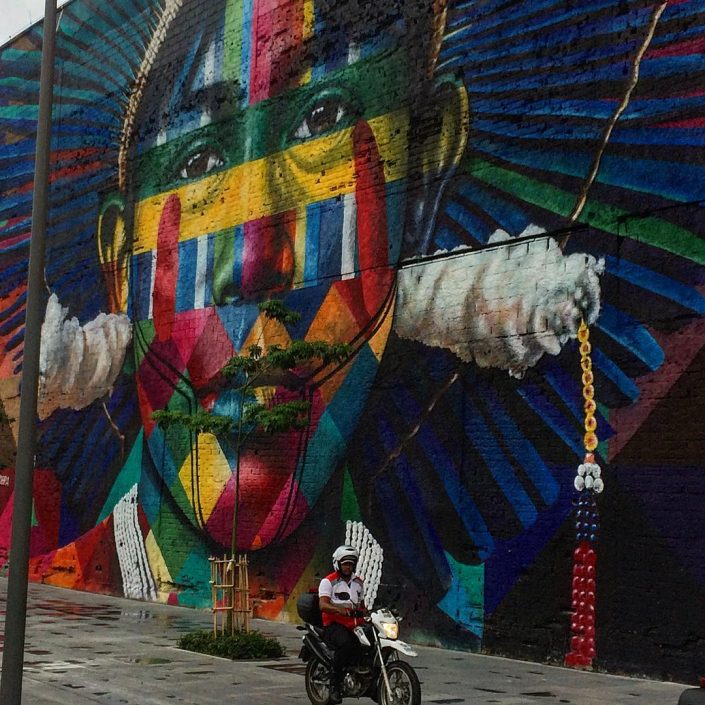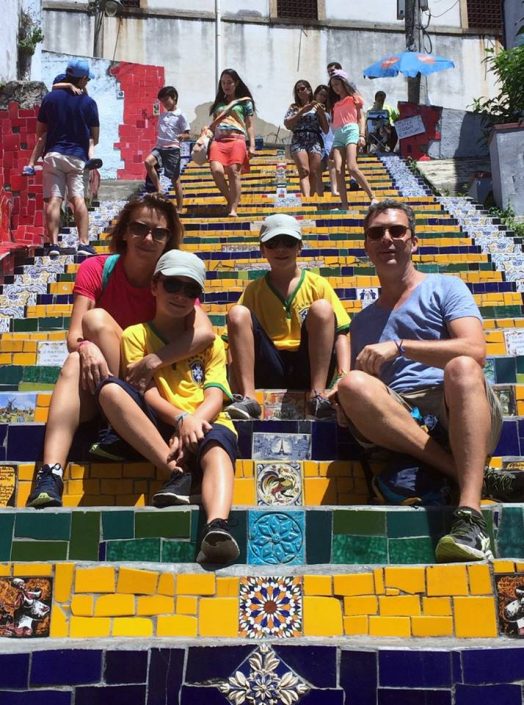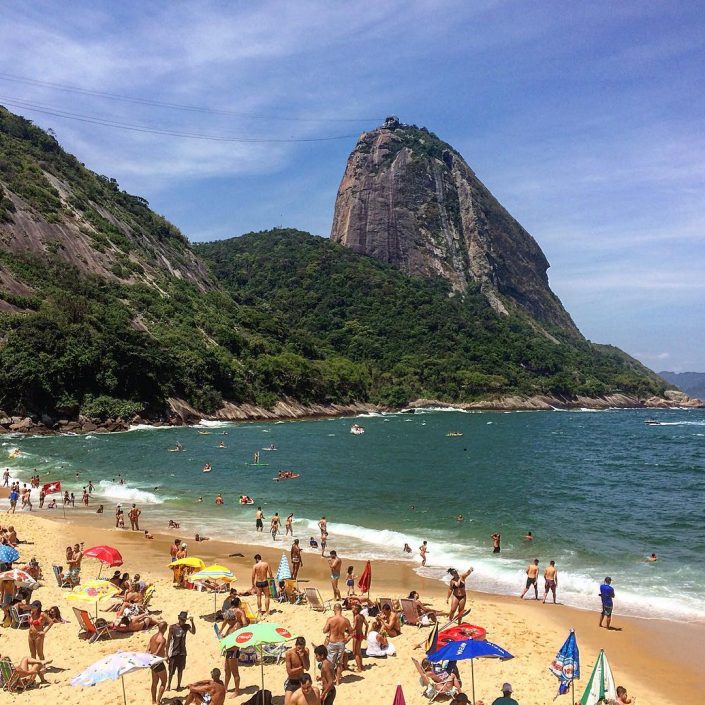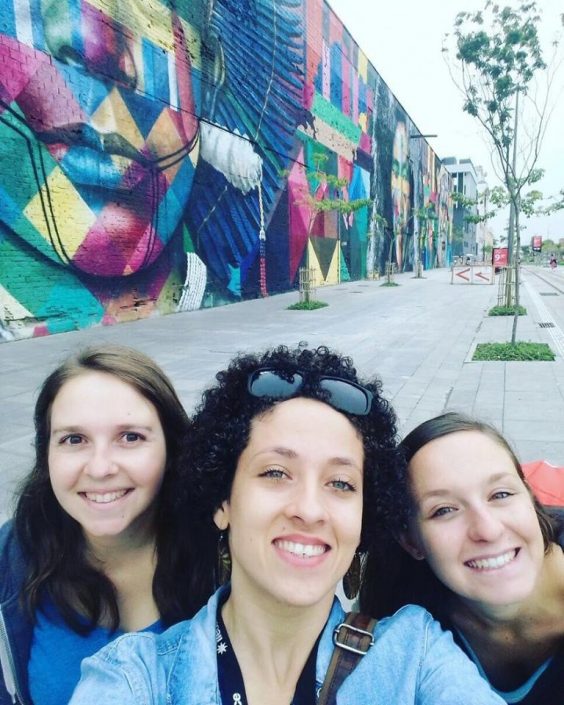SAFETY IN RIO DE JANEIRO
First of all, I want to reassure you, Rio de Janeiro unfortunately has a reputation for violence and danger which is very far from reality. I’ve lived in Rio since beginning of 2013 and if this city was a cut throat, I wouldn’t have stayed there and me and my guides wouldn’t enjoy showing you around it so much. Our mission does not end there because we consider that we are also travel facilitators and, in addition to guiding you during your visiting days, we advise and help you, if necessary, during the entire duration of your stay in Rio.
That said, like everywhere in big cities, there are rules to follow to be peaceful:
First of all, be aware that you can be spotted from afar because of your way of walking, of being dressed, of not being tanned (not yet), in short, of not being a Carioca, means that you are identified like a stranger. So follow the following recommendations:
Passport, money, jewelry, watch ……
- Leave your passport at the hotel and always have a photocopy with you.
- Do not walk around with a large amount of cash. Put your money in a secret pocket, the underside or in a belt provided for this purpose and always have a 20 or 50 r (réais) bill in a pocket to give if necessary …
- Avoid wearing a watch (there is the time displayed throughout Rio), designer handbags, jewelry, or gold chains while walking.
- Avoid using your Canon or Nikon type cameras with telephoto lenses in empty or low crowded areas and do not carry them over the shoulder but in a bag.
- Do not walk around with the smartphone in your hand or glued to your ear.
- Only withdraw cash from ATMs inside banks and carry only a credit card with you.
Beach and sun (or not sun because it beats down under the clouds)
- When you go to the beach, never leave your belongings unattended, 90% of thefts occur on the sand. Do not leave your things next to you but under your head or between your legs and if you are alone and want to swim, leave them with someone next to you while you are swimming.
- The waves are generally powerful as well as the current. So be careful and do not go beyond the point where the water is above your pelvis.
- Use sunscreen or you’ll quickly turn color like a shrimp…
- Drink plenty of water (bottled), coconut water or fresh fruit juice (they are excellent).
- Exit casually dressed style shorts, T-shirts and flip flops or tennis.
Crossing streets
- Lose your habits and forget that you have the priority. It’s not you, it’s the car. You can cross when the pedestrian light passes green and after checking that the car will stop. For pedestrian crossings without light, ensure that you have ample time to pass.
- From Monday to Friday, the seaside avenues in Ipanema (av Viera Souto) and Copacabana (Av Atlantica) change direction (from right to left when looking at the sea) between 7am and 10am in order to facilitate traffic. So do not forget it when you cross during these hours.
- Use the bins installed everywhere to throw your cigarette butts (for smokers) and papers because otherwise you risk a fine. It’s the law “Lixo Zero” ie zero waste in the street.
Taxis
- First of all, taxis are not expensive at all (let alone Ubers), so take advantage of them, especially in the evening or at night to avoid being left alone in the street.
- When you get in a taxi, never accept when the driver “gives you a friendly price”, this package will always be more expensive than the meter (taximetro). So ask that he start his “taximetro” otherwise do not get in the taxi and take another, there are a multitude (around 35,000) looking for a ride.
- For the meter, rate 1 applies from 6 a.m. to 9 p.m. every day except Sunday and public holidays, otherwise it is rate 2 (20% more).
- Never pay with a credit card and always pay with cash. Note that taxis in principle never have change, especially if you are a foreigner. So arrange to have small denominations and real coins. You can round up to the next real and, if you’re generous, up to the next 5 (if the run is $ R 7.80, you give a 10 bill if not 8).
In Centro, Lapa and Santa Teresa, be careful
- When you walk in these 3 neighborhoods, be more careful because the police, whether military, civilian or touristic are less present and you must avoid being alone in a street, even during the day. So take a walk in the streets where there are at least a few people.
- The city center (Centro) which is also the historic district of Rio is empty on weekends because it is not a residential area but an office area. so don’t go there on the weekend or at least be very careful.
- Lapa is THE party district of Rio and there are plenty of people in the streets from Thursday evening and especially Friday and Saturday. The pickpockets are therefore there too and can spot you from a distance, so be careful of your pockets or your backpack. For information, this is also an area where there are a lot of drug addicts, especially crack addicts, and especially around the Arches of Lapa (the old aqueduct).
- Santa Teresa, Montmartre Carioca is a charming district, all in height with a multitude of small streets and alleys. It is therefore easy to find yourself alone around a bend in a busier street.
Favelas
- It is estimated that a quarter of Brazilians live in favelas and Rio de Janeiro is no exception to this rule since it is the state capital where there are the most favelas, nearly 1,000 with around 2 million people who live there.
- 99% of its inhabitants are “good people” with almost all type of legal activities, but 1% live from various trafficking, mainly drugs (including corrupt police officers).
- The vast majority of the favelas do not present any danger but they are communities where people know each other and if you want to walk into a favela, do not do it without a guide or a local who will be able to show you the points of interest ( especially the views because many are located on the hillside) and will allow you to interact with its inhabitants who are always welcoming.
In case of problem …..
- If unfortunately you are held up, do not resist, there is no point in risking being hurt (or worse) for a smartphone or a little money. Give what you have, no matter the value, that’s what interests the attacker who has only one thing in mind: to escape as quickly as possible.
- And to file a complaint if you wish, go to the DEAT (Delegacia de Atendimento ao Turista) in Leblon, Av. Afrânio de Melo Franco, 159, Tel: + 55 21 2332 2924.

















